|
In a recent report by the Organisation for Economic
Co-operation and Development (OECD), teacher-student time was
highlighted as an important variable in good and effective teaching
(OECD, 2009). This is perhaps even more important within the realm of
foreign language education. However, in Japan, class sizes are quite
large, forming an obstacle to the development of communicative
competence (Canale & Swain, 1980). A 50-minute communicative
English class, averaging 40 students per class, leaves each person with a
little over a minute of teacher-monitored speaking time. While there is
no doubt that development of language skills through face-to-face
communication is best, the realities of school budgets simply do not
offer enough time for students to access adequate practice time with the
teacher.
|
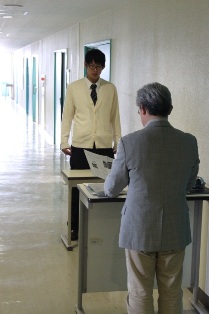
Figure1 |
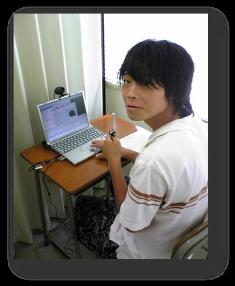
Figure 2 |
Figures 1 and 2: Other ways of conducting individual interviews within large classes
For the past 2 years at Toyama National College of Technology,
we have been working on the development of a software-based interactive
visual/audio recording system that incorporates facial recognition and
audio mapping technology. Our objective is to increase student speaking
practice as well as teacher-student time while offering opportunities
for self-learning. The ultimate goal is to help our students improve
their communicative ability/competency in English and assist them in
improving their performance on English oral interview-type assessment
tests.
THE NEED
Gradually more and more focus is being placed on English
communicative ability within the Japanese educational system and work
environment. For many years, it was quite common to listen in on an
English class and not hear one English word spoken. Traditionally, the
emphasis in Japan was on teaching translation and grammar. However, this
trend is changing, as evidenced bythe Japanese Ministry of Education
making several revisions to their education guidelines, including an
increased number of English lessons in elementary schools, as well as a
mandate stating that English classes must now be taught principally in
English (MEXT, 2011).
But perhaps more relevant to current postsecondary students and
business people are changes being made to the TOEIC (Test of English
for International Communication) exam. TOEIC has long been both the
academic and industry standard within Japan when assessing a person’s
ability to communicate in English. A student who wanted to transfer to a
university from our college would have to achieve a certain TOEIC
score. Likewise, there are set TOEIC scores for admittance to jobs such
as flight attendants, office bosses, and ship captains.
Until 2006, this test was composed of reading and listening
sections only. The test reflected the educational system by focusing on
written communication and neglecting to include a speaking section. But
increasingly, assessment tests that contain oral-interview components,
such as the Test of English as a Foreign Language (TOEFL) or the new
version of the TOEIC test, which includes a speaking section, are
becoming a necessity for entrance into Japanese universities and the job
market (Powers & Kim, 2009).
OTHER SOLUTIONS
Many commercial software and online products, such as Rosetta
Stone and English Central, can help students improve their speaking
skills. These are useful products, but for our purposes, these existing
systems are either too expensive or inflexible. Most software-based
programs are created for individual users and are sold via individual
licenses, group licenses, or on a per-PC basis. Though some of these
programs would be helpful, unfortunately, as a public school, we are not
able to afford them. Furthermore, the audio and video files that are
generated cannot be easily [and legally] extracted from the proprietary
software. This makes it impossible to manage the content and analyze it
for educational purposes.
OUR SOLUTION
Once finished, our interactive visual/audio recording system
will add voice and face recognition components. Voice recognition
technology will be used for instantaneous feedback and will make the
system usable for interview practice. Students will be scored on
accuracy as well as speaking speed and response time. Their speech will
be compared to a database of acceptable answers with a resulting score
generated. This technology still requires much more development, so
automated scoring will be used for practice only.
Facial recognition will be used to log in to the system, making
the interface more user-friendly. Both the user’s identity and facial
direction will be confirmed and monitored, opening up the possibilities
for use at home or when the teacher is not able to monitor the
student/class.
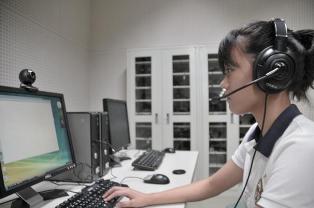
Figure 3. Current equipment requirements
Upon completion of beta-testing, we feel our program will be
beneficial to educational institutions that require oral interviews
within a large class environment or over long distances. Whether miles
apart, or within a classroom with large numbers, a virtual one-to-one
learning environment will be created.
|

Figure 4 |
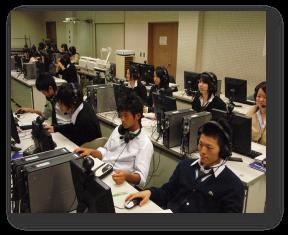
Figure 5 |
Figures 4 and 5. One-on-one interviews within a class of 40 students
CURRENT SITUATION
We are currently in the second year of the developmental stage
of this research project. Each component is being developed separately
and our goal is to add the facial recognition component to the system
this year, with voice recognition to follow the year after.
Teachers can go to the administrators’ screen to upload their
videos and organize them into a number of themes and levels. The length
of both the question and the answer times can easily be adjusted. Then
students can log in to the system and answer questions in the form of a
video, similar to the technology that YouTube uses. In fact, the system
itself is most easily described as a two-way interactive streaming Web
video site.
|
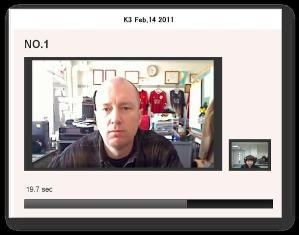
Figure 6 |
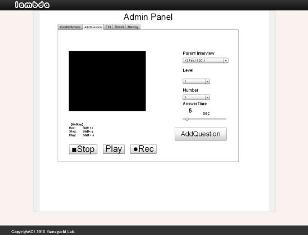
Figure 7 | Figures 6 and 7. Screenshots of interface and question creation section in admin panel
The students’ audio and video files are recorded and sent to a
server that the teacher can access. The teacher then uses a standardized
rubric to score each video. These files can then be kept and accessed
by both students and teachers to monitor improvement, and also for
quantitative and qualitative analysis.
Without the automation, our interactive visual/audio recording
system is still quite useful, but for the teacher the grading time is
the same as if individual interviews were carried out. The present
usefulness of the system is limited to (a) carrying out interviews
between the interviewee and interviewer asynchronously and (b) the
creation of a multiyear database for students.
|
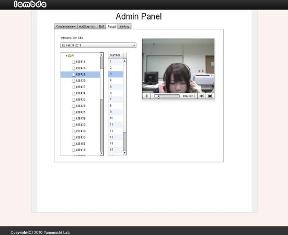
Figure 8 |
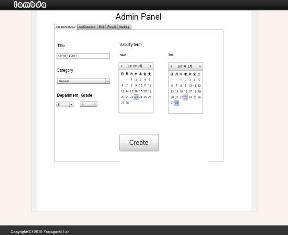
Figure 9 |
Figures 8 and 9: Other screenshots of admin panel
CONCLUSION
Improving face-to-face communication should be the goal of any
foreign language communicative class. Unfortunately, restrictions
imposed by time and educational budgets make it impossible for teachers
to spend sufficient individual time with students. Our research is not
looking to replace face-to-face communication; rather, we are trying to
prepare our students for their English proficiency tests or for that
important 15-minute interview that will determine their
academic/professional careers.
REFERENCES
Canale, M., & Swain, M. (1980). Theoretical bases of
communicative approaches to second language teaching and testing. Applied Linguistics, 1, 1-47.
MEXT (Japanese Ministry of Education, Culture, Sports, Science
and Technology). (2011). The revisions of the courses of study
for elementary and secondary schools. Retrieved from www.mext.go.jp/english/elsec/__icsFiles/afieldfile/2011/03/28/1303755_001.pdf
OECD. (2009). OECD Education at a Glance
2009. Retrieved from www.oecd.org/edu/eag2009
Powers, D., Kim, H.-J., Yu, F., Weng, V., & VanWinkle,
W. (2009). The TOEIC® Speaking and Writing Tests:
Relations to Test-Taker Perceptions of Proficiency in English.
ETS Research Report. Retrieved from http://www.ets.org/Media/Research/pdf/RR-09-18.pdf
This work was supported by a KAKENHI Grant-in-Aid for Scientific Research (22520612) from Japan Society for the Promotion of Science.
Todd Cooper is an associate professor at Toyama
National College of Technology. He teaches a wide range of English
courses and has presented on educational technology at conferences in
Canada, Japan, Korea, and the United Kingdom. Currently, he is
developing an interactive virtual interview system and was recently
awarded a grant-in-aid for scientific research from the Ministry of
Education, Culture, Sports, Science and Technology in
Japan. You can find Todd at Facebook: Todd Cooper & Blogger: http://tnctienglish.blogspot.com/
| 
